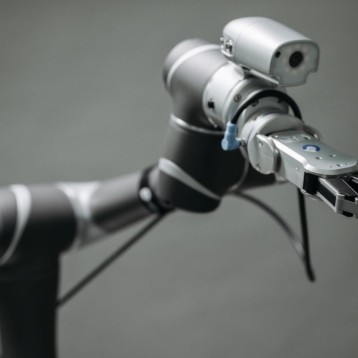|
Weighing only four pounds, the spring ankle with regenerative kinetics device (SPARKy) is lighter than most passive prosthetics. The new below-the-knee prosthetic takes advantage of the mechanics of the natural gait which consists of two components: stance and swing. In the stance phase, the foot in planted on the ground and pushes off into the swing phase where it moves to the next ground position.
SPARKy stretches a spring in the position of a healthy Achilles tendon. The spring captures the energy generated as the foot breaks the fall of the leg as it reaches the ground at the start of a stance phase, storing it as the ankle rolls over the foot. That stored energy then propels the foot forward for the next step, greatly increasing the power of that step. Small motors in the foot provide tiny adjustments to the spring to regulate the gait and position the spring for maximum efficiency. Researchers claim that the range of motion and power provided by the spring is roughly equivalent to the normal gait of a person with two natural legs.
Walking on inclines, traversing stairs, and walking backwards often prove difficult tasks for people wearing prosthetic legs. SPARKy handles each of these tasks without difficulty. Researchers expect further improvements in functionality as they lower the weight even further in the future.
|
Funded in part by a three year grant from the United States Army, the eventual goal of the project is to restore enough functionality to amputees to allow them to return to active duty.
TFOT has reported on other assistive technology including the Honda Stride Management Assist and Bodyweight Support Assist systems to help users walk and crouch more easily, the Hybrid Assistive Limb (HAL) robot suit designed to help certain classifications of paralyzed people walk again, a personalized user interface that adopts itself to the specific visual and motor abilities of its users, the potential for mind-controlled bionic limbs as a replacement for current prosthetic devices, a system designed to control mouse movement using eye movements, and the COGAIN gaming system that allows users to control gaming functions with eye movements.
Read more about SPARKy in this Arizona State University press release.












